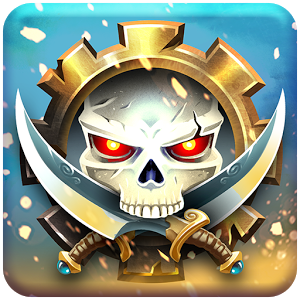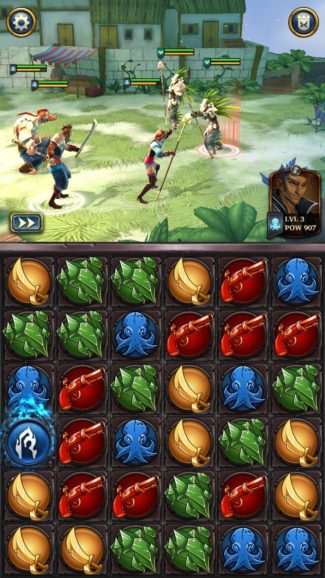Aperture Desk Job
LQ: 8.8
Recommended Age: 8+
Skills Used: Focus, Working Memory, Reading

Saber’s Edge is a mix of role-playing, card battling, and match-3 game styles. The player unlocks and collects cards in order to gather a pirate crew and enhance their equipment. They then go into different battles that use a match-3 board to decide the strength of each character’s attack. After each character’s turn, the board refreshes. Occasionally a special tile will appear that will allow a character’s turn to “spill over” onto the next character’s game board, gaining an extra attack. The player can also choose what skills of their characters’ to level up. The app has been rated T for Teen by the ESRB due to infrequent/mild: simulated gambling, cartoon or fantasy violence, and realistic violence. LW4K stands by this rating.
Saber's Edge helps kids practice and improve the following skills:
 Flexibility
FlexibilityAdapting and adjusting to changing conditions and expectations.
While most match-3 games require cognitive flexibility, Saber's Edge kicks it up a notch with the rotating game board. In order to be successful in this game, the player must be able to cope with change. First, there is the typical match-3 mechanics where every move removes tiles and causes new, random ones to drop down from above. While part of this is predictable (if you remove one tile from a column, the player knows all the rest of the tiles in that column will shift downwards one place), part of it is unpredictable (the player doesn't know what will drop in from above). Beyond these changes, however, is the fact that after every move, the whole board turns to reveal a new board (each character has their own board). With three or more characters to remember as the game advances, that makes it hard to do long-term planning. Which means that the player must be able to cope with change. If they can't, they may end up failing to see the best move possible. If they don't play the best moves they can, they won't do as much damage to the enemy--and the enemy will have more chances to do damage to the player's characters. If this happens enough times, the player will fail the level.
Getting started and then maintaining attention and effort to tasks.
Because of the role-playing game elements of Saber's Edge, the player has to be able to shift attention between tasks. Not only do they have to find the best move possible, they have to consider whether to attack or heal and whether to do an attack on one enemy or multiple. Each level requires the player to shift their attention between all of these options in order to come up with the best strategy for winning the battle. If the player can't shift their attention, they will miss the chance to heal themselves or take out an enemy. This will lead them to losing the battle and having to use more of their limited energy to try again.
All membership plans come with full access to our entire suite of tools learning guides, and resources. Here are a few of the ones we think you’ll like the most: